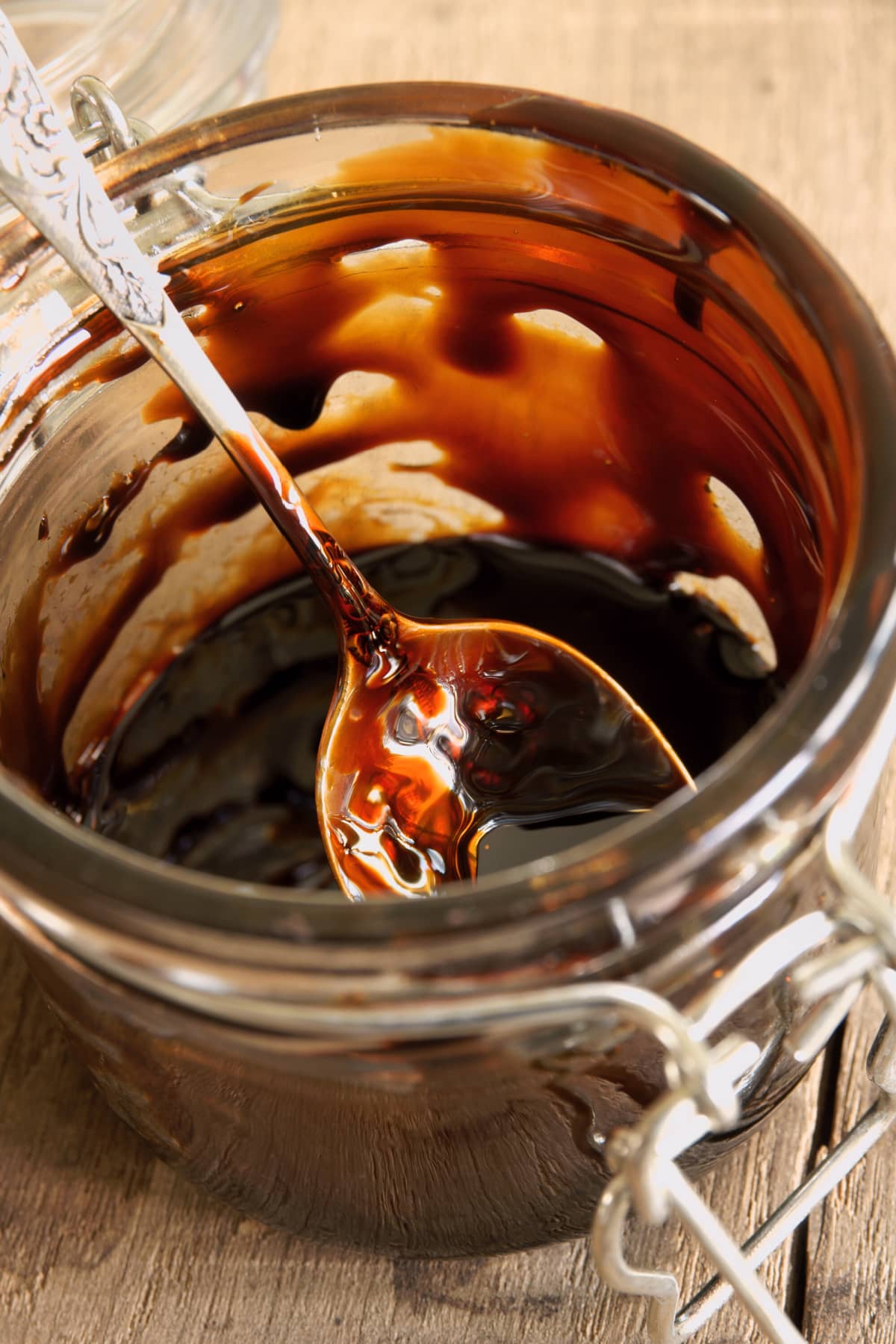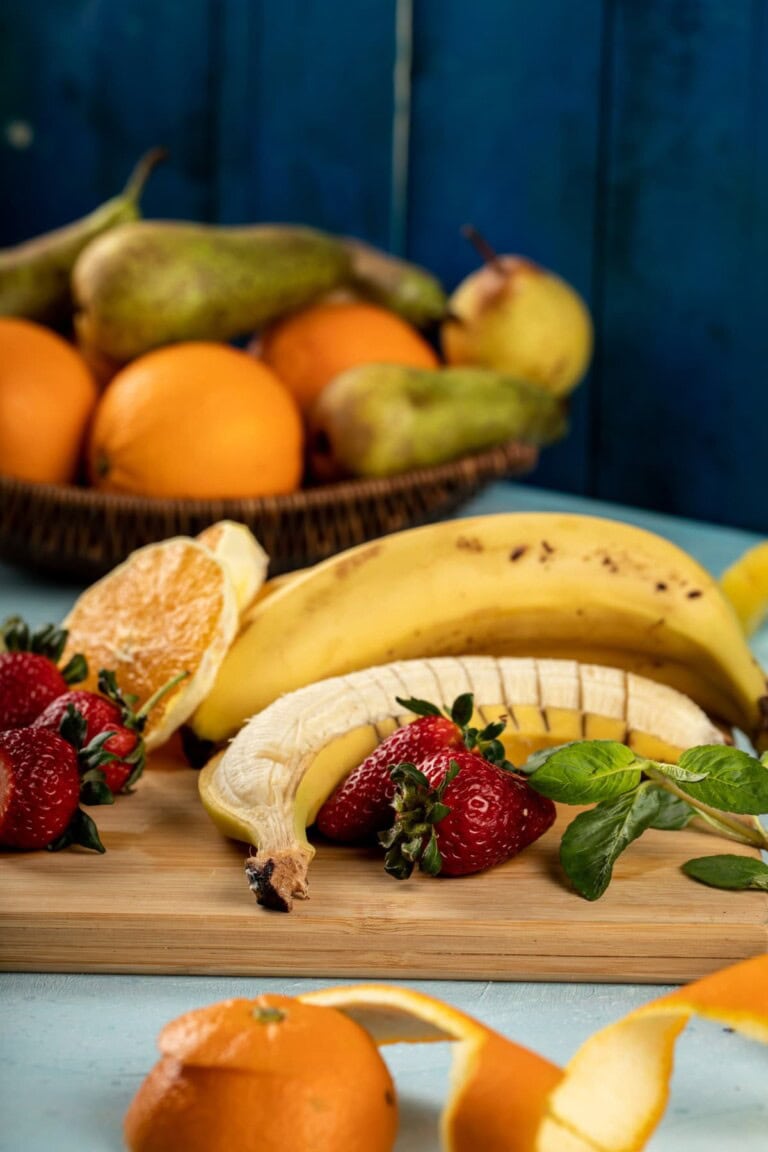Is Molasses Gluten Free?
Have you ever stopped to think about what molasses is? And is molasses gluten free?
Molasses is one of those ingredients that almost everyone has stashed away in the back of a cabinet, only to be pulled out a few times a year to use in desserts like cookies or cake.
Check out the Sugarcane Plant, Is Brown Sugar Gluten Free, Substitutes for Turbinado Sugar, and How to Beat Sugar Cravings!
As someone who bakes without gluten, you may even be curious about whether or not molasses contains gluten.
Let’s take a more in-depth look at the ingredients and see which types of molasses are safe for those who are gluten-free.
What is molasses?
Molasses is a thick, black syrup made from sugarcane or sugar beets. It is known for its rich flavor. After the sugar has been extracted from the liquid collected from various sources, the liquid is next reduced by boiling into a very thick syrup.
It has a very thick consistency, and the final product can take on several distinct forms, depending on how long it is cooked.
For example, to produce blackstrap molasses, one must first complete the most extensive boiling procedure, consisting of three separate boiling cycles.
Molasses is not only delicious, but it is also an excellent source of calcium, selenium, iron, and copper, all of which can contribute to the maintenance of strong bones.
Molasses is an ingredient that may be found in a wide variety of recipes, particularly those involving baked products, such as in gingerbread cookies.
It is also useful for sauces that require a particular level of sweetness, such as barbecue sauce for Southern-style dishes (think sweet baked beans!) and other marinades.
Molasses is a wonderful ingredient to use in place of honey or maple syrup in any recipe that calls for such sweeteners.
Molasses is a delicious addition to a stack of pancakes or cookie dough and produces excellent results when used in any of these ways.
You don’t need to look any farther if you’re searching for a gluten-free sweetener alternative that won’t sacrifice flavor for the absence of gluten.
Is molasses gluten free?
Yes, pure molasses is gluten-free. For those who are curious about what precisely gluten is, it is a class of proteins that can be found in grains like wheat, rye, and barley.
These proteins are responsible for helping food maintain its structure. Although it is not inherently unhealthy, it can cause some health problems in people who cannot process it properly.
One of them is celiac disease, an autoimmune disorder that can cause damage to the intestines if gluten is consumed.
Molasses is produced from sugarcane. Hence it does not include gluten in its natural state. Because sugar cane or beets is typically the only component, it is suitable for consumption on gluten-free diets.
However, a word of caution while making purchases from the store: it is always important to check the nutritional labels to make sure that no additional ingredients are added and that there is not a possibility of cross-contamination. Having said that, you should be fine to go for the most part!
What is molasses made of?
Molasses is produced from the liquid left over after the sugar has been extracted from sugarcane or sugar beets. It is made by reducing this liquid through boiling until it becomes a thick, sugary syrup.
Molasses may be produced in various forms, each of which is distinguished from the others by the amount of time spent boiling the liquid in question.
Different kinds of molasses:
Molasses are available in many distinct kinds, each of which may be put to a unique set of uses. Let’s talk about the different types of molasses that could be available to you at your local grocery shop.
Light molasses
When the liquid extracted from sugarcane or sugar beets is reduced by boiling it for a shorter period of time than normal, a lighter variety of molasses is produced.
Because it has the most delicate color and retains the most of its sweetness from the sugarcane, this variety of molasses is the one that is utilized in baked items.
Dark molasses
When most people in the United States hear the word “molasses,” the image that pops into their heads is a dark-colored syrup.
This molasses is darker than light molasses and has a more profound and robust taste. In addition to being delicious in gingerbread cookies and cake, this ingredient also works wonderfully in molasses cookies.
Blackstrap molasses
Molasses cooked for an even longer period of time than dark molasses are known as blackstrap molasses. Bitter in flavor, it is used in cooking less frequently than black molasses due to its distinctive taste.
Because it is so filled with vitamins and minerals that people love, this component has developed a reputation for being a healthy food in recent years. This component has a far more astringent flavor than either light or dark molasses.
Sulfured molasses
You’ll see the terms sulfured or unsulphured molasses on the packaging of molasses you buy at the grocery store.
Sulfured molasses is made with sugar cane that hasn’t matured entirely before being cut and turned into molasses.
The term “sulfured” comes from the idea that sulfur dioxide is used to help preserve the sugar cane before manufacturers are ready to process it.
Unsulphured molasses
Unsulphured molasses is made from sugar cane that has matured before being cut and processed into molasses. It is considered “unsulphured” because it doesn’t have any sulfur dioxide added to it for preservation.
Health benefits of molasses
Molasses is a good source of iron, selenium, and copper, all of which help maintain healthy bones. However, we wouldn’t go as far as saying that it’s a portion of healthy food.
There are plenty of other nutrient-dense whole foods to choose from that will give the same added benefits without having as much sugar. High sugar diets can lead to high blood sugar and insulin spikes, leading to type 2 diabetes.
You should not rely on molasses for its nutrient benefits when the amount of sugar it in quickly outweighs them.
Of course, you can eat molasses in moderation, and when paired with a well-balanced whole-nutrient-dense food diet and daily movement, it shouldn’t lead to adverse health effects. But if you overconsume it, it can become an issue.
How to use molasses?
Molasses may be utilized in various ways, including the most well-known: molasses cookies or gingerbread. To get the most of this ingredient, try using it in alternative ways.
- For gingerbread cake or biscuits
- As a part of a pancake or oatmeal syrup
- Used in baked beans
- In a pie
- In baking recipes
- When used in marinades
Gluten free molasses brands
Gluten-free molasses is widely available at supermarkets and grocery shops. Check out the following gluten-free brands and manufacturers:
This brand is fat-free, gluten-free, kosher, and non-GMO, so it fits a variety of lifestyles. It’s composed entirely of sugarcane juice, and the only other component is molasses! Of course, this product is gluten-free — and it’s labeled as such. This brand is normally available for roughly $3.
This brand has a lot of taste and comes in mild and blackstrap varieties. It’s all-natural and, once again, has one ingredient. According to their website, it’s ideal for cookies, pies, cakes, and glazes. It is also high in various vitamins and minerals.
Another non-GMO choice with all-natural components, Crosby’s comes in three varieties: Fancy Molasses (the highest quality), Blackstrap, and Cooking (a blend of the two).
This is the most costly of the lot, but organic food is always the most expensive. It is Fair Trade certified and naturally vegan and gluten-free. This is unsulphured blackstrap molasses.
How to store molasses?
Unused molasses should be kept in a cold, dark cupboard. If the jar’s rim is sticky, wipe it down to ensure the seal is secure and that you can open the jar when you need it the next (otherwise, the top will stick to the jar).
Molasses can be stored in your pantry for two years or at least a year beyond the “best by” date marked on the jar. If the molasses has an odor or seems crystallized, it is no longer acceptable and should be thrown out.
Alternatives to molasses
If you’re not a lover of molasses and want to know some other gluten-free options, don’t worry, there are a few!
- Brown sugar
- Coconut sugar
- Maple syrup
- Date syrup
It’s typically a decent alternative for molasses if it’s sweet or sticky. However, because molasses can be sweet or bitter, light or black, I believe you’ll discover molasses to your liking!
So, is molasses gluten free?
Yes, molasses is gluten-free and may be used in gluten-free recipes. There is a wide variety of molasses available, and I hope this post has demonstrated that.
Check labels to ensure that the sole component in your molasses is molasses… not gluten!
Other related articles:
- Are Corn Flakes Gluten Free?
- Is Buckwheat Gluten Free?
- Is Quinoa Gluten Free?
- High Fiber Gluten Free Foods
- Are Avocados Good For You?
- Cumin Nutrition And Benefits
- Health Benefits Of Ginger
- Are Garbanzos Good For You?
If you enjoyed this article, “Is Molasses Gluten Free?”, and would love to see more, join me on Youtube, Instagram, Facebook & Twitter!
Get discounted copies of my cookbook here.
Fortunately, because of the ads on our website, readers and subscribers of Healthier Steps are sponsoring many underprivileged families.







